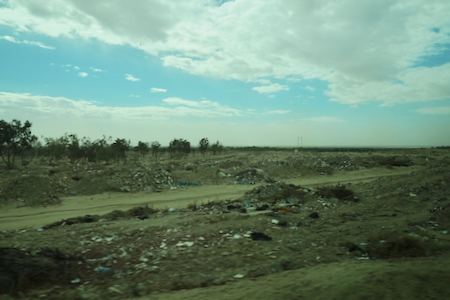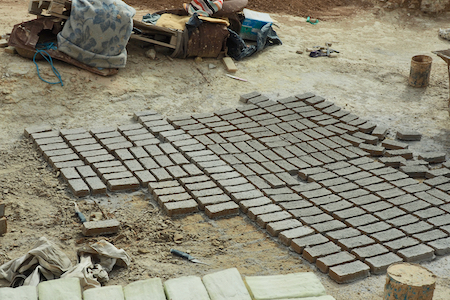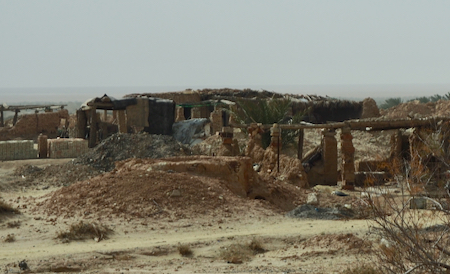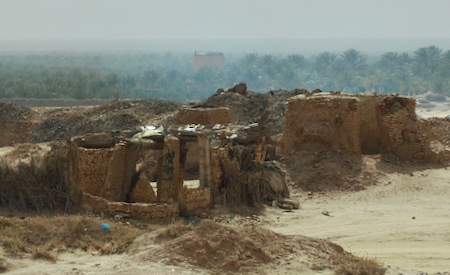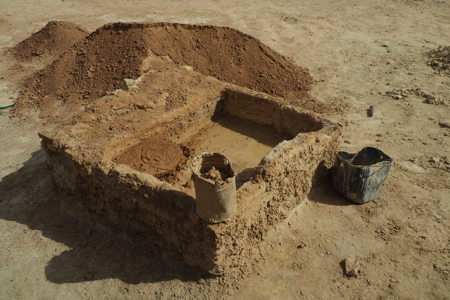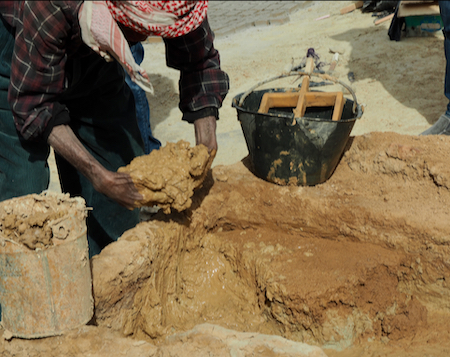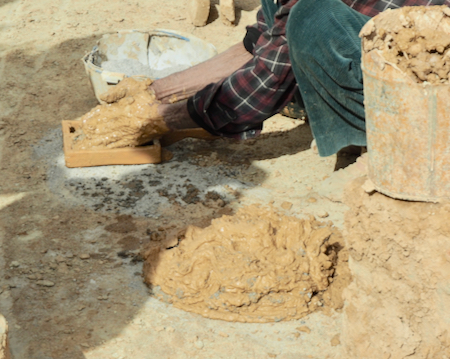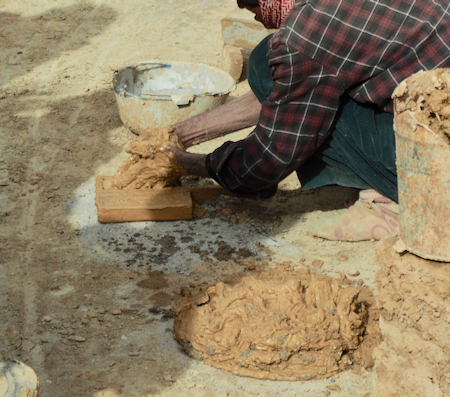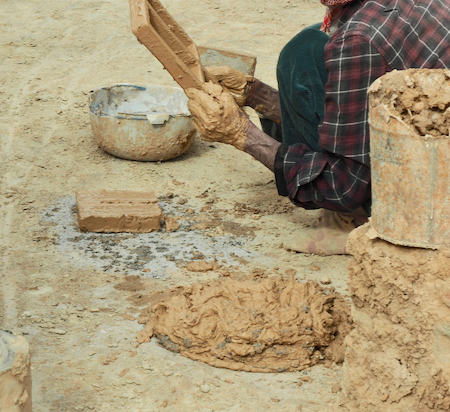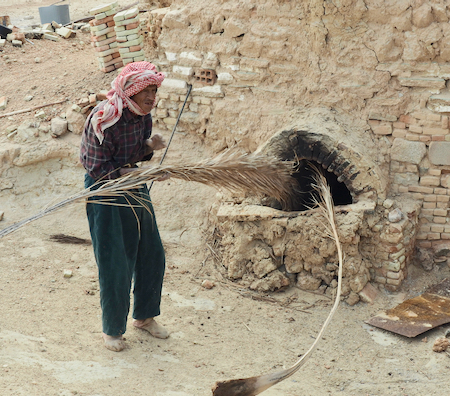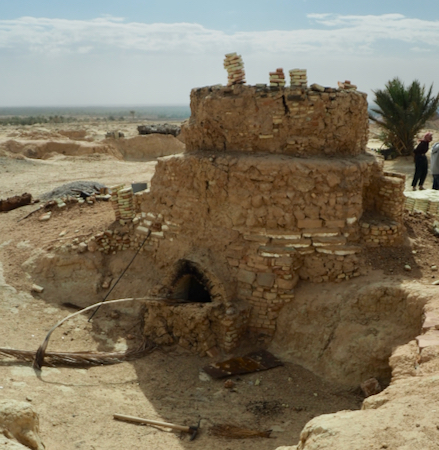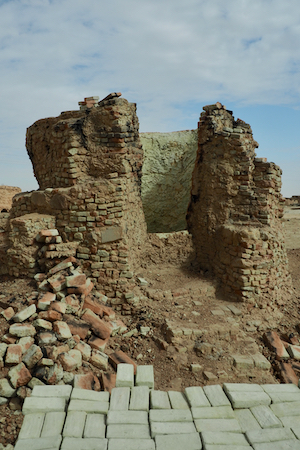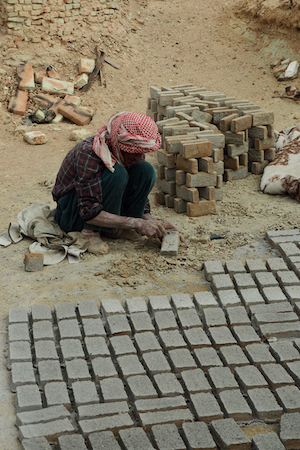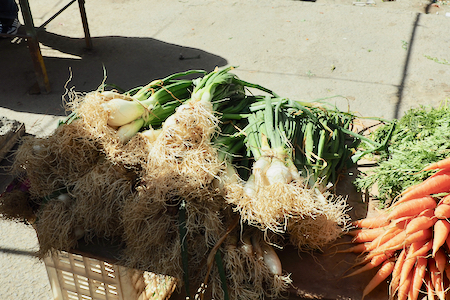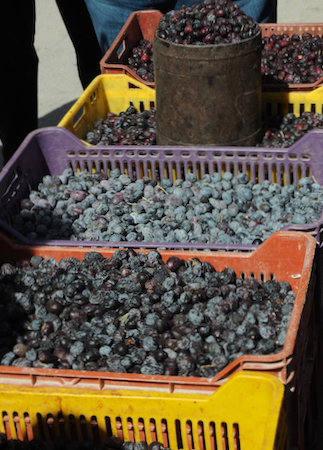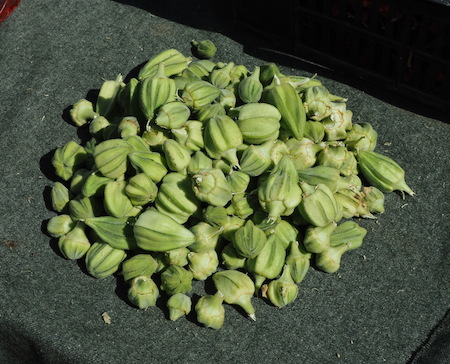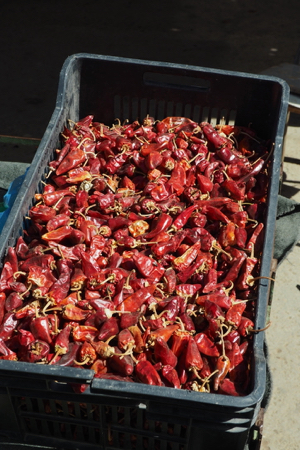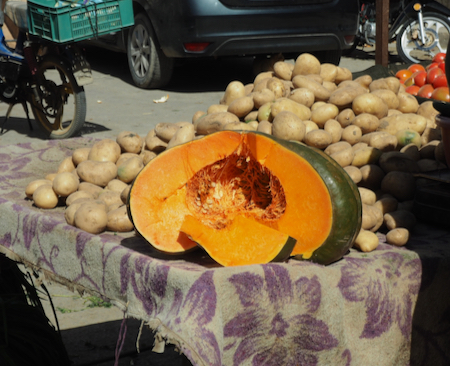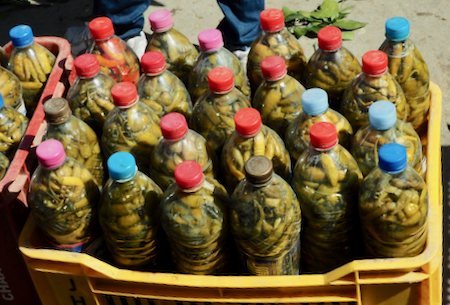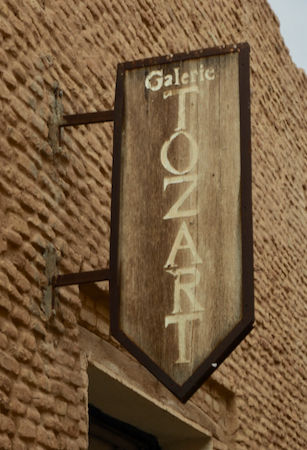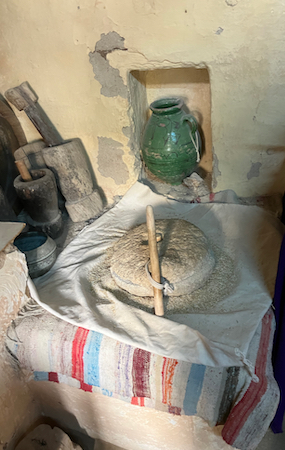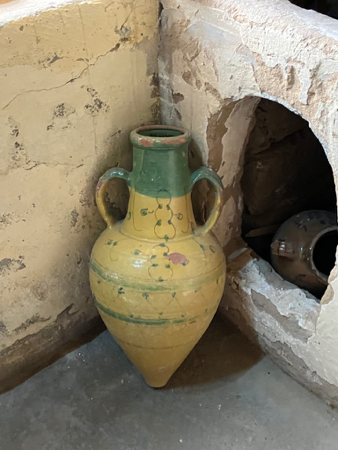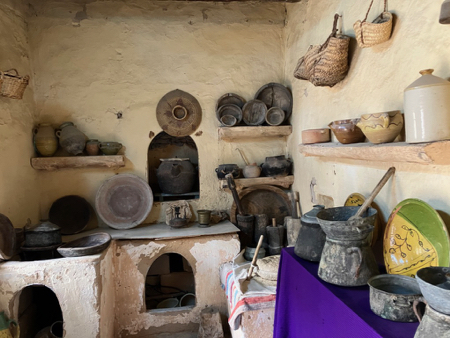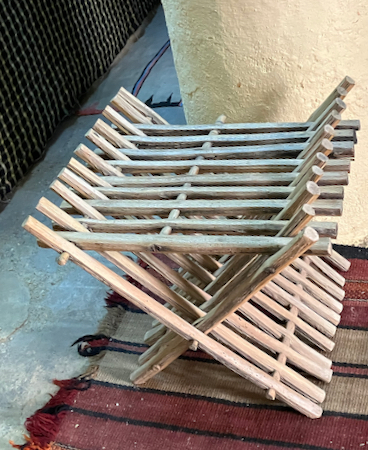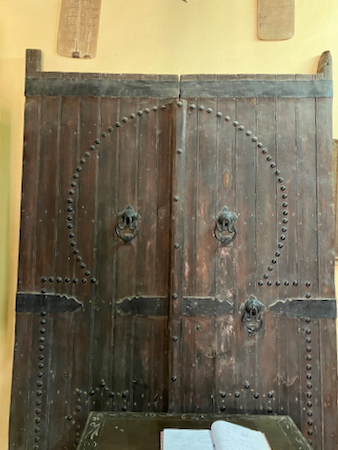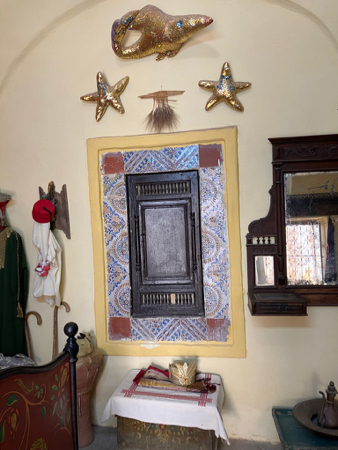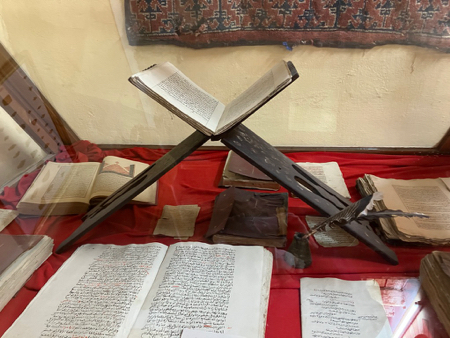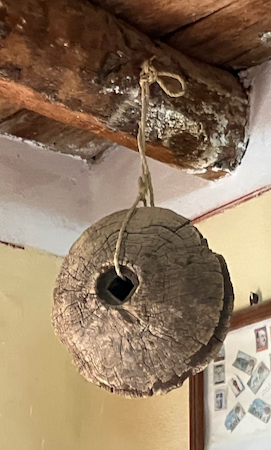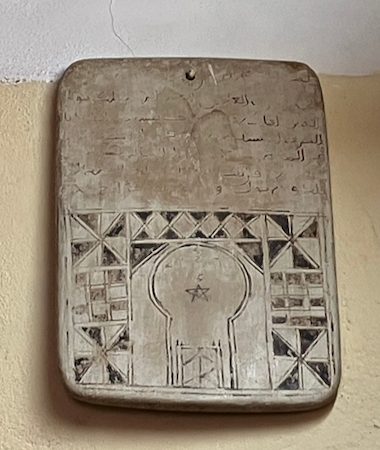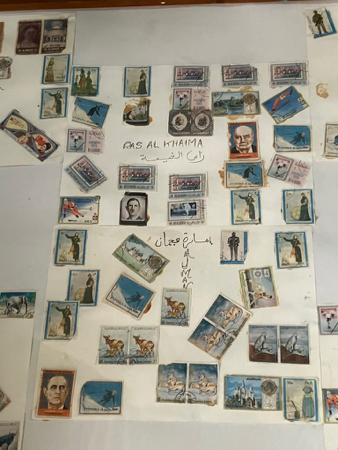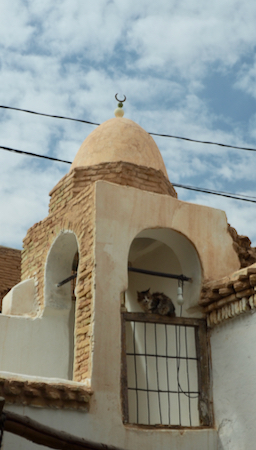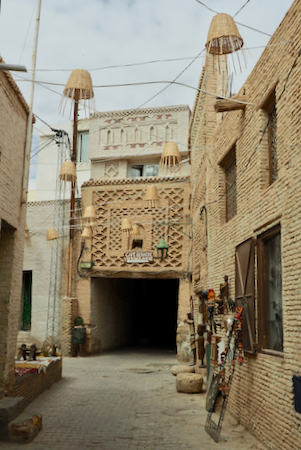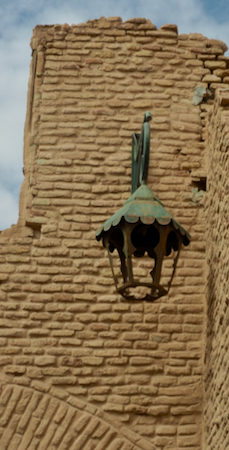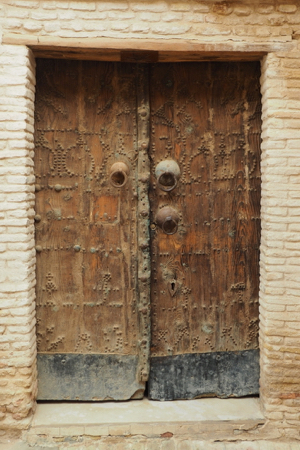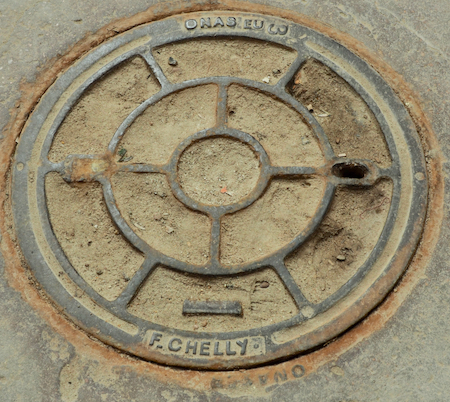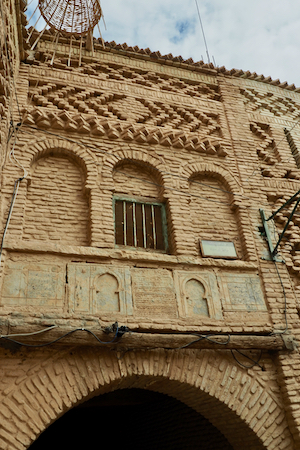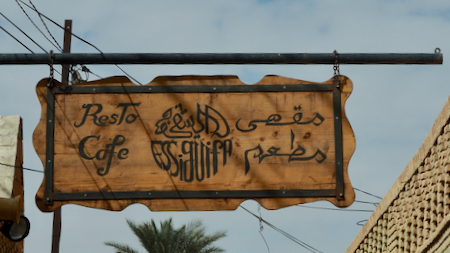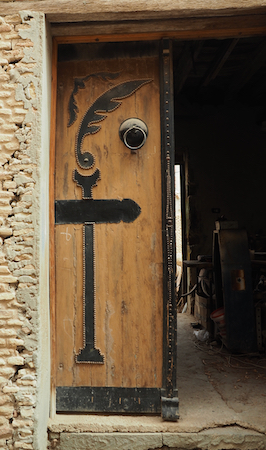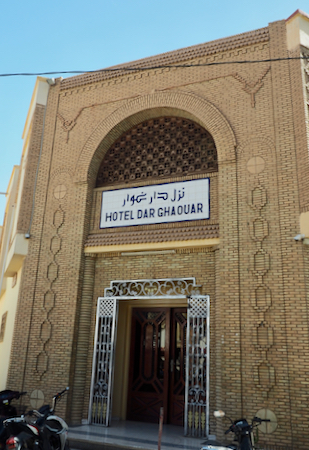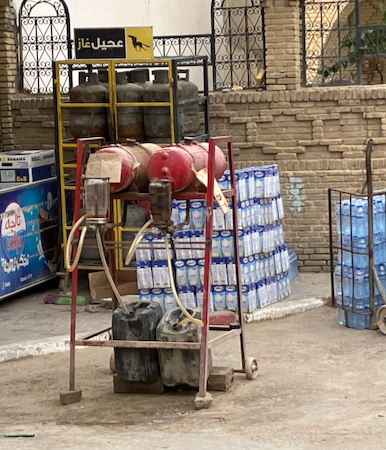Next we went to a place where there is white clay and many brick ovens and operations. We were given a demonstration by the 79 year old still making bricks at his kiln. The light colored bricks which must be used to decorate facades in Tozeur are made from 2/3 white local clay and 1/3 red clay brought from miles away. Water is added to the clay and mixed by hand. Ash from the kiln fire box is spread on the ground, a form for two bricks is laid on top, clay is put in the form and smoothed out, the form is lifted and the process is repeated 400 to 1,000 times a day. Ash is spread over the top the wet clay and left to dry for three days in winter or one day in summer. The ash is cut off with a blade to make a smooth square edged brick. It is left until there are thousands to stack in the brick kiln. Dried palm leaves are burned in the fire box below the bricks and they are fired for 36 hours.
Approach to the brick "factory"
Sun drying the bricks
Brick factory yard
Brick factory yard - kilns in the foreground
Raw materials - clay and water
Mixing the clay with the right amount of water
Filling the mold
Filling the mold
Removing the mold
Demonstrating how palm fronds are used as fuel for the kiln fires
Kiln full of bricks ready to be fired
Filling a kiln
Scraping ash off the bricks before firing
We walked in the medina. There was an outdoor vegetable market selling things grown in the oasis. We walked a few blocks in the old abandoned residential area. Most of the area was once the Jewish community but people left for Europe or Israel in the 1960s. They didn’t sell their houses, just took the keys and left so they are just abandoned.
Blueberries
Okra
Peppers
Squash
Bottles of pickles
After the market, we visited an interesting local museum, Dar Cherait Museum, located in a lady’s house. She has collected many things used in Tunisia’s past and explained the significance of many of the items. There were 18th c. couscous pots and serving bowls, baskets, wood bowls, metal things like guns, knives, and tools, some written manuscripts, a large bucket for well water made from camel hide and carried by a camel, metal chains with ankle irons used on slaves, etc. It was quite fascinating.
Two signs, same place, I think
Grinding wheels
Pots, etc.
Stool
An Etrove or prayer book stand
Looks like old wood wheels
Postage stamp display
Cat watching over the museum
Street scene
Street light?
Very old door
A not very pretty manhole cover! - the only example
to be found
Decorative brick façade
Nice sign
Nice door
Lunch
Another Black Market "gas station"
| Return to Top | Return to Itinerary | Return to Trips page to view other trips | Return to Dreamcatcher Home Page |
